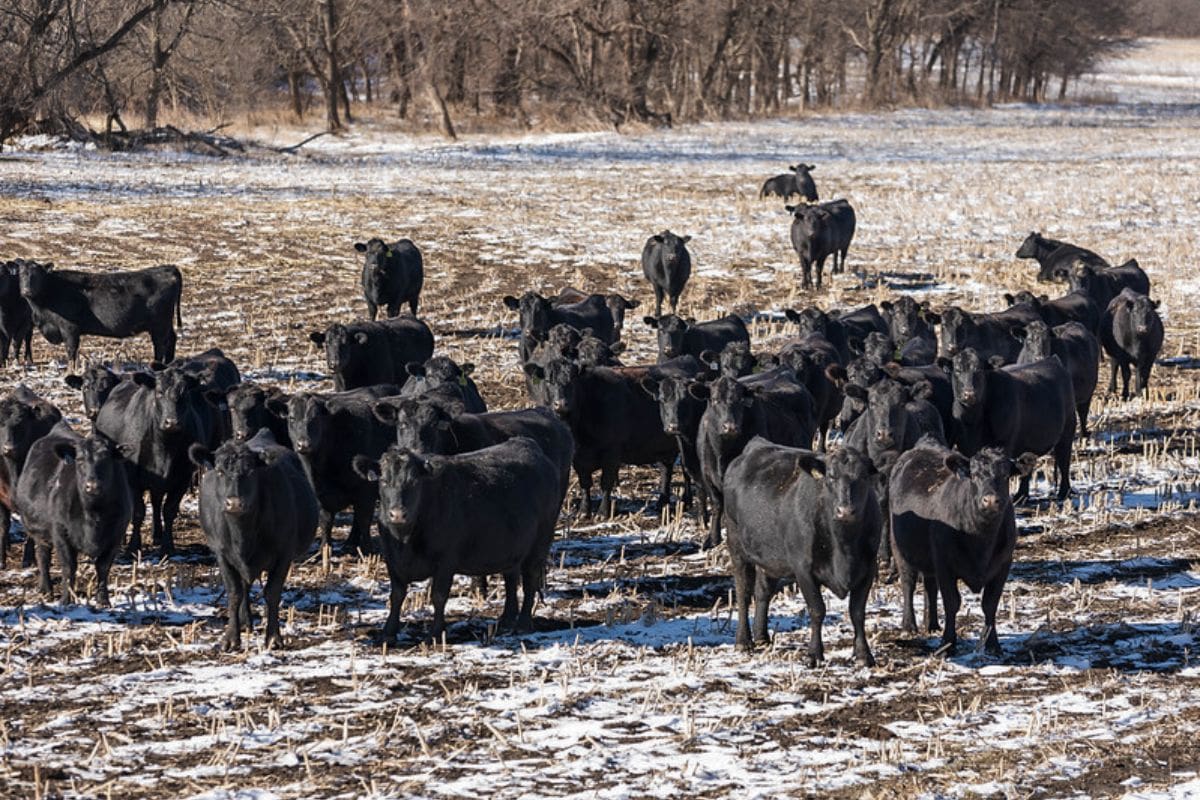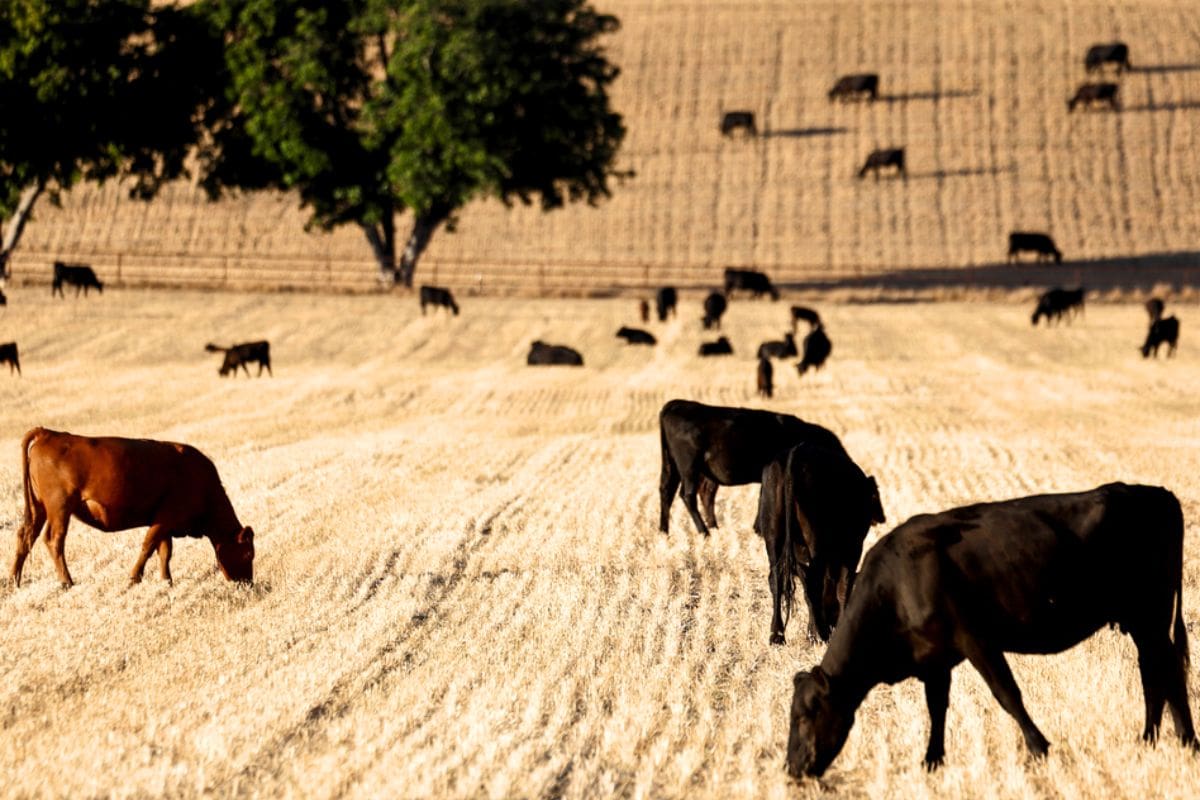California Cattle Herds: As the California cattle industry looks ahead to 2024, industry experts and ranchers find themselves grappling with a multitude of challenges and uncertainties. From the conclusion of the calving season to the impact of drought and water scarcity, the future of California’s cattle herds hangs in the balance.
In this discussion, we will the insights provided by CattleFax’s Patrick Linnell on the cyclical nature of the cattle industry, explore the ramifications of tightening cattle numbers and evolving market dynamics, and assess the economic implications that lie ahead for this vital sector.
Prepare to be intrigued by the intricate tapestry of factors that will shape the future landscape of California’s cattle industry in the coming years.
Key Takeaways
- The California cattle ranching industry faces challenges such as drought and water scarcity, which impact feed and water availability, productivity, and herd sizes.
- The cyclical nature of the cattle industry, influenced by supply and demand, has practical implications for producers in terms of breeding decisions, herd management, and market outlook.
- The tightening of cattle numbers due to insufficient heifer retention and higher culling rates, driven by limited water and forage availability, creates supply and demand imbalances with potential implications for market dynamics and prices.
- The limited supply of cattle may lead to more favorable prices for producers, but it also poses economic implications and the necessity to monitor and adapt to changes for long-term sustainability and profitability.


CattleFax’s Patrick Linnell Discusses Cattle Cycle on California Cattlemen’s Podcast
After considering the implications of the conclusion of the calving season, the family now turns their attention to gaining insights into the current state of the cattle cycle and its broader impact on the industry by listening to CattleFax’s Patrick Linnell on the California Cattlemen’s Podcast. Linnell’s discussion provides valuable information for those seeking mastery in the cattle industry.
Here are three key points from his conversation:
- Understanding the cattle cycle: Linnell emphasizes the importance of comprehending the cyclical nature of the cattle industry. He discusses how supply and demand, market conditions, and other factors influence the cycle, and highlights the significance of recognizing where the industry is positioned within the cycle.
- Implications for producers: Linnell the practical implications of the cattle cycle for producers. He discusses how understanding the cycle can help producers make informed decisions about breeding, herd management, and marketing strategies to optimize profitability.
- Market outlook: Linnell provides insights into the current market outlook based on the cattle cycle. He discusses factors influencing prices, supply and demand dynamics, and potential challenges and opportunities that lie ahead for the industry.
Drought Challenges and Water Scarcity
Drought and water scarcity present significant challenges for cattle producers across the country, impacting various regions to varying degrees. The ongoing challenge of drought is a major concern, with some areas experiencing improvements while others continue to grapple with the consequences of water scarcity.
These challenges affect the availability and quality of feed and water for cattle, leading to reduced herd sizes and decreased productivity. In regions heavily reliant on irrigation, such as California, the lack of water exacerbates the situation, forcing ranchers to make tough decisions about herd management and feed sourcing.
Additionally, the increased competition for limited water resources puts pressure on both the agricultural and livestock industries, highlighting the need for sustainable water management practices to mitigate the impact of drought on cattle production.
Tightening of Cattle Numbers and Market Dynamics
As the challenges of drought and water scarcity persist, the cattle industry faces an additional hurdle in the form of tightening cattle numbers and its potential impact on market dynamics. Here are three key points to consider:
- Insufficient heifer retention: The industry has struggled to retain enough heifers for breeding purposes, leading to a decline in the overall cattle population. This trend is expected to continue, further exacerbating the issue of tightening cattle numbers.
- Sustained culling rate: Cattle producers have been forced to cull their herds at a higher rate due to the limited availability of water and forage. This practice has contributed to the ongoing reduction in cattle numbers and poses challenges to rebuilding the herds.
- Implications for market dynamics: With fewer cattle available for production, the market dynamics are likely to be impacted. Supply and demand imbalances could lead to higher prices for cattle and beef products, potentially affecting both producers and consumers.
The tightening of cattle numbers is an important issue that the cattle industry must address to ensure its future sustainability and profitability.


Also Read: Magic Mushrooms California Reconsiders Psychedelic Therapy
Economic Implications and Future Landscape of the Cattle Industry
The economic implications and future landscape of the cattle industry are intricately tied to the prospect of tighter cattle numbers and the resulting impact on market dynamics.
With a limited supply of cattle expected, prices are projected to be more favorable due to the interplay between supply and demand.
Patrick Linnell’s insights shed light on the complex interconnections within the industry, indicating a prolonged period of tightened cattle numbers and potential economic implications for producers and stakeholders in the market.
The cyclical nature of cattle production remains a central determinant in shaping its future landscape.
As such, it is crucial for industry participants to carefully monitor and adapt to these changes in order to navigate the evolving economic environment and ensure long-term sustainability and profitability.
Conclusion Of California Cattle Herds
The future of California’s cattle industry in 2024 is uncertain due to challenges such as drought and water scarcity. Cattle numbers are tightening, and market dynamics are changing.
These factors have economic implications and will shape the future landscape of the industry. It is crucial for stakeholders to adapt and find sustainable solutions to ensure the success and longevity of California’s cattle herds.

